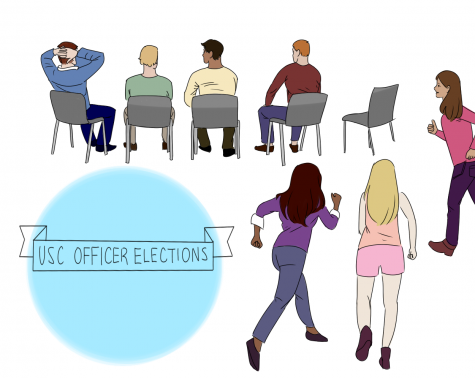STAFF EDITORIAL: Student elections lack representation and integrity

Only 12% of the Upper School Council is comprised of female-identifying students. Officer elections stand in the way when it comes to gender representation.
Another year, another officer election. Most of the time, you probably know who you’ll be voting for before you even walk into the auditorium. Not only do elections at St. Paul Academy and Summit School lack gender representation, but the structure discourages meaningful voter participation.
Student elections shouldn’t be uncontested; choosing between only two candidates—or not choosing at all—degrades the voters. Students are forced to accept a candidate regardless of whether they support or disagree with their ideas. One such example was this year’s election for co-president of the Upper School Council. Kieran Singh and Nora Povejsil, two of the five juniors currently on the council, teamed up to run for the position. Surprisingly, they ran completely unopposed.
The issues with the officer election process are not a fault of the students who chose not to run. Rather, it’s an issue within the each council’s structure. Most students run for the highest-ranking positions at the end of their junior year.
The problem arises when a student is forced to choose between two positions based on which one they would most likely win. For example, if a student is on a council at the end of their junior year, they can either pair up with another junior to run for a position like co-chair, or they can choose to run for vice-president; a safer option, lest they end up as a representative. Conversely, a student may be very motivated to run for co-chair, but the four other juniors on the council have already paired up, leaving the student with no running mate, and essentially no chance of winning.
The broad objective of student government is to give students an impression of democracy and leadership—not just to give them a voice.
In the case of the 2018 officer election on the Upper School Council, one pair of juniors ran for co-chair, and the other three juniors ran for smaller officer positions. A position like co-chair should be highly contested, but the pool of potential co-chairs is quite small. Some strategies like dual-gender candidacies have proven rather advantageous, while other candidacies are inherently less likely to win. Another common theme of student elections is the popularity contest, in which a candidate is elected based on their popularity—not their ideas and qualifications. In fact, most students have already chosen who they’ll vote for before they even enter the auditorium, which is why many candidates’ speeches are peppered with inside jokes and humor.
Why does all this matter? The broad objective of student government is to give students an impression of democracy and leadership—not just give them a voice. Whether voting or running, it teaches students to value democracy and representation.
Representation, however, is another issue that plagues elected councils, especially the Upper School Council. Currently, only two of the 17 students on USC are female, an embarrassing 12%. Graduating USC co-presidents Numi Katz and Emilia Topp-Johnson shed light on this issue during class meetings, encouraging female-identifying students to run for class representative positions. They even hosted a speech-writing workshop for female-identifying students that were thinking of running.
“Have faith in yourself. There are so many talented girls. Being a good leader isn’t about always yelling at people or always knowing what to do, it’s about listening to people and cultivating a productive and empathetic environment,” Katz said.
The lack of female candidates in representative elections is the fault of a culture that discourages them from running. In some cases, an election in which female students lose against their male counterparts will have a ripple effect, taking down their confidence to run in following elections. In the 9th grade year of the class of 2020, two girls and one boy ran for one slot, and the boy won. In the next election, four boys ran for three slots. Now, the class of 2020 is entirely represented by male students.
The solution is not simply to encourage more girls to run. It requires a dismantling of the culture that stigmatizes one’s loss. If more students run, the loss will be a common experience and will come to represent an effort rather than a failure. Students must feel like they are choosing who they want to elect, not choosing who they want to keep from being elected, which often the case in narrow elections.
Voters must avoid choosing a candidate until they listen to their speech. Beyond that, they must pay attention to how well the candidate would represent the student body. As you vote for representatives today, choose candidates who will add a new voice, represent an under-represented perspective, or create balance for the grade level.
Mimi Geller is the Director of RubicOnline. This is her fourth year on staff. Mimi believes that high school journalism connects people by sharing their...
Melissa Nie is the Director of RubicOnline. This is her fourth year on staff. Melissa believes that everyone has a story to tell, and high school journalism...